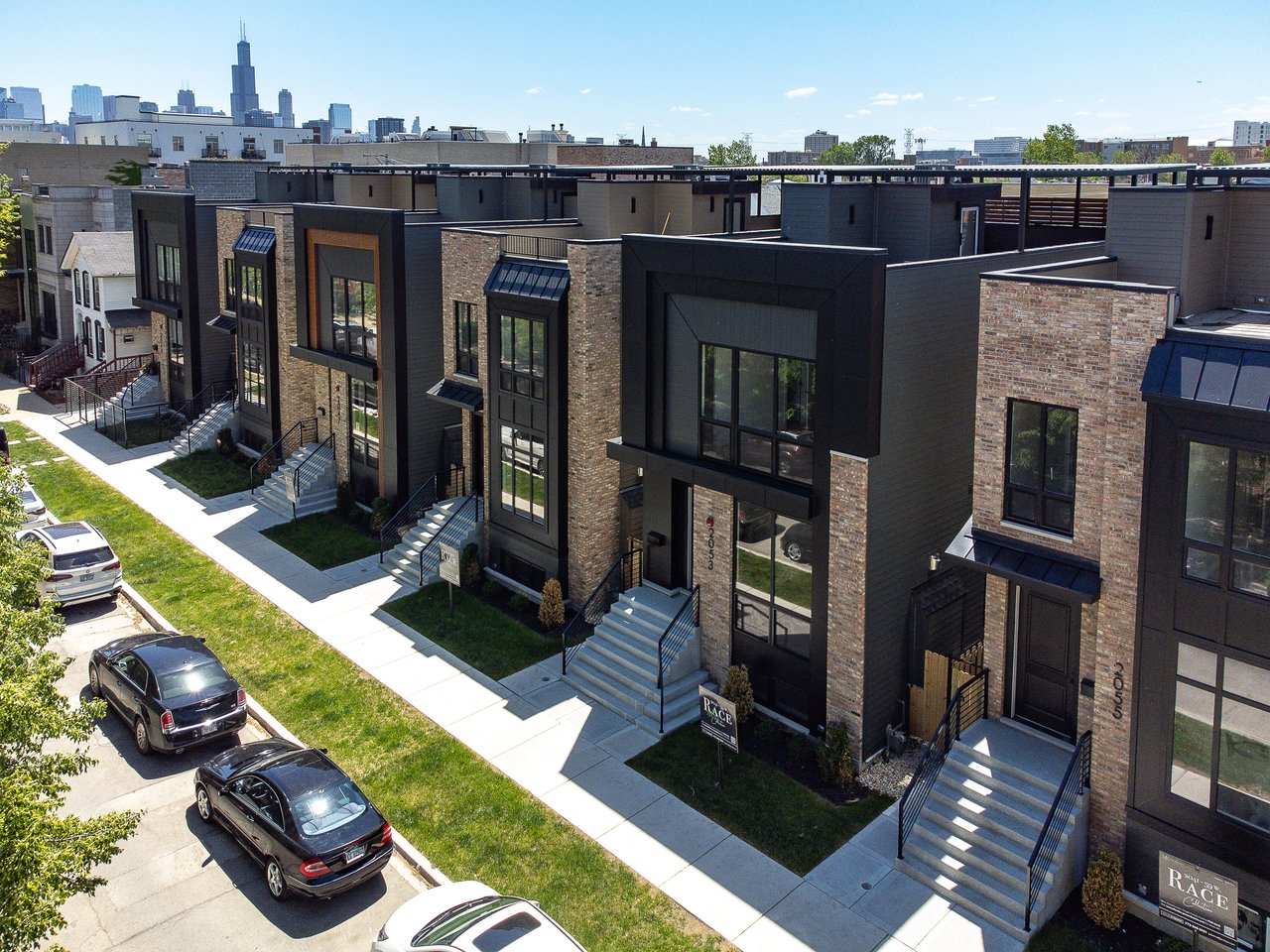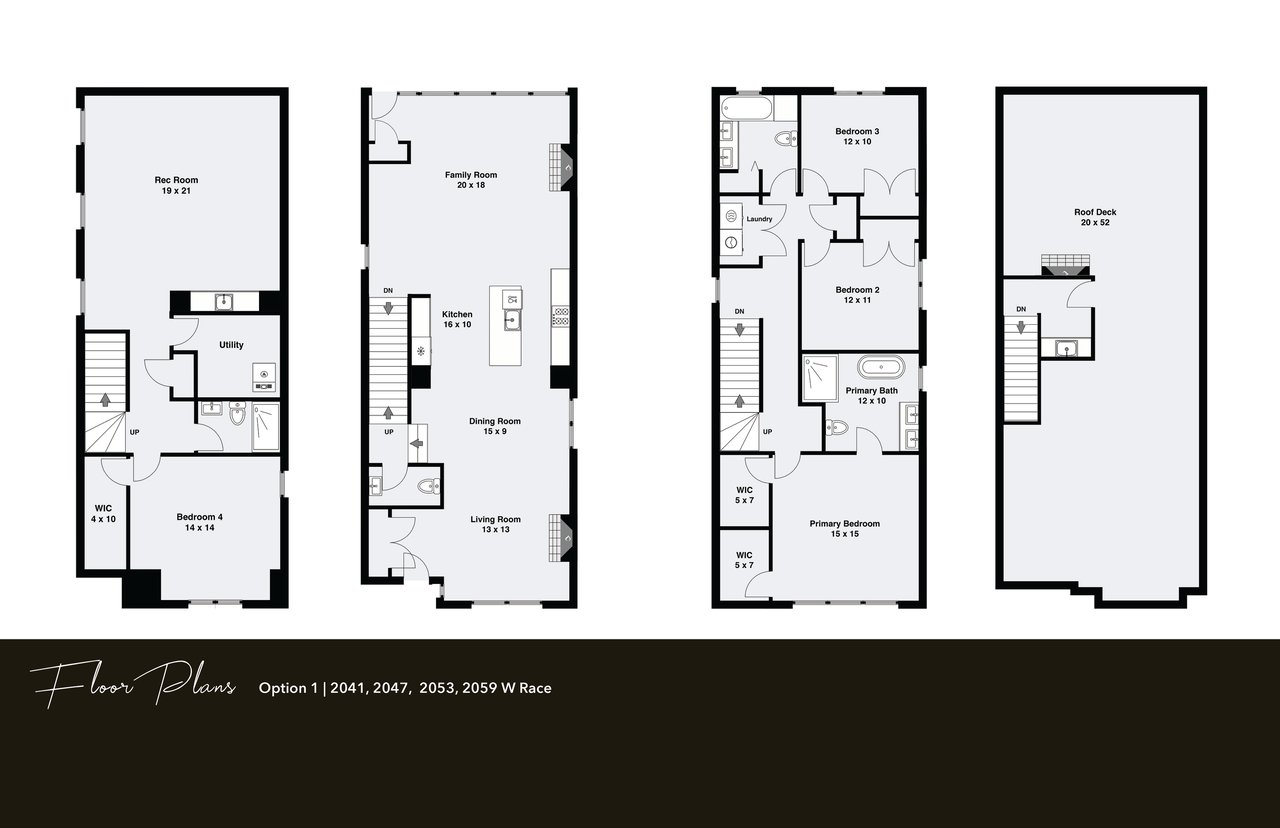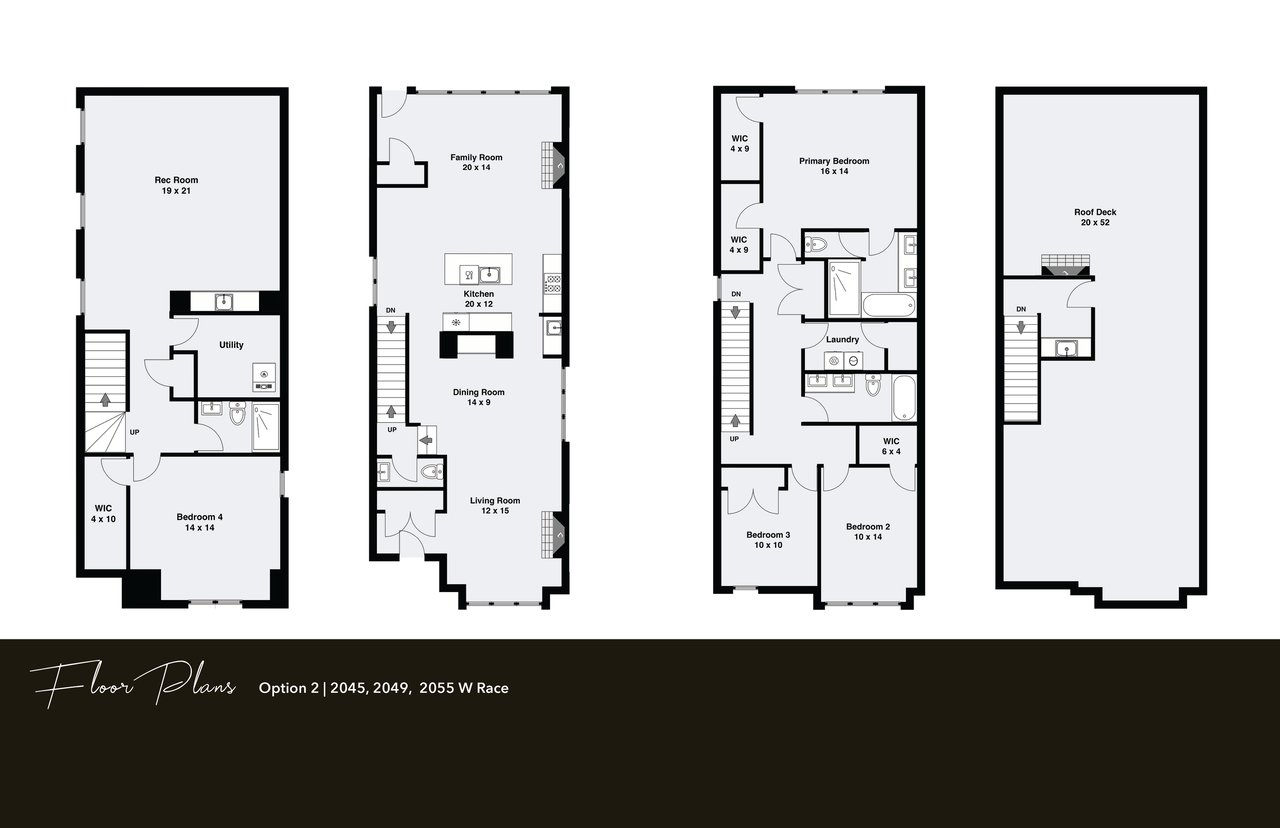
ABOUT
The Race Collection is a modern new construction development with seven high-end 4 bedroom, 3.1 bath single-family homes in West Town by top Chicago developer, MK Construction & Builders, Inc. Spacious, extra-wide floor plans featuring design forward interiors with great consideration given to fixtures and finish materials. Sun filled spaces with oversized windows. Open concept main-level perfect for entertaining. Combined living/dining area features direct vent gas fireplace with floor to ceiling surround. Chef quality kitchen includes top of the line Sub-Zero and Wolf appliances, custom cabinetry with quartz countertops, and large island with bar seating. Expansive family room with second gas fireplace and a wall of back windows. Upper-level primary suite with two WIC's and ensuite bath featuring a freestanding tub, frameless glass shower, dual sinks, and heated flooring. Two additional bedrooms, full bath with tub and dual sinks, and laundry with LG washer/dryer complete the level. Third floor wet bar opens to a roof deck with outdoor fireplace. Finished lower-level features radiant heated flooring and includes a spacious recreation room complete with wet bar, fourth bedroom with large WIC, full bath with shower, utilities, and luxury vinyl plank flooring. Rear deck with staircase to garage roof deck with pergola. Prime West Town location close to restaurants, shopping, entertainment, and Smith Park! Easy access to public transportation and other great neighborhoods.
Year Built
Total Bedrooms
Total Bathrooms
Living Space
Garage Spaces
The Race Collection features two extra-wide floor plan options with 4 bedrooms and 3.1 bathrooms. Both plans include an open concept main-level perfect for entertaining, upper-level primary suite, lower-level recreation room, and roof top deck.


Explore
The West Town Chicago neighborhood is a large community area that includes a handful of distinct neighborhoods: East Village, Noble Square, Polish Downtown, Pulaski Park, Smith Park, Ukrainian Village, and Wicker Park. It also includes River West and East Humboldt Park (though some sources don’t consider the latter a separate neighborhood).
The boundaries of West Town are the former railroad tracks on Bloomingdale Avenue on the north, the Chicago River on the east, the Union Pacific railroad tracks on the south, and a jagged western border that includes Humboldt Park proper.
Importantly, the area that falls under the umbrella of “West Town” varies depending on the source, but what I’ve listed above is the definition of the West Town community area according to the city of Chicago. Some resources consider Chicago Avenue as West Town’s northern border, and the expressway as its eastern border, greatly reducing the size of West Town. When “West Town” is referenced, it’s most often used to refer to the areas of East Village and Noble Square, which will be the primary focus of this neighborhood guide.
Read on for a deeper dive into what it’s like to live in West Town Chicago.
Early neighborhood anchors like Cafe Central, Flo, Hoosier Mama Pie Company, and Five Star set the stage for development along Chicago Avenue. Now the area has a little bit of something for everyone.
West Town is also known for its plentiful boutiques along Chicago, Ashland, Grand, and Damen. This area includes gems such as quirky gift shop RR#1, vintage and handmade boutique Dovetail, and 1930s to 1980s decor and clothing purveyor Seek Vintage.
West Town has its fair share of green spaces. In the East Village and Noble Square areas, Eckhart Park is the largest at just over 8 acres. There’s a fieldhouse and indoor swimming pool, baseball diamonds, athletic fields, a playground, and a community garden. Movies in the Park, plays, concerts, and other Nights Out in the Park events are held at Eckhart Park throughout the year.
Pulaski Park is smaller, tucked into a densely populated neighborhood at the neighborhood’s eastern edge, near the Kennedy Expressway. It was built in 1912 in the middle of a predominantly blue collar Polish neighborhood and is named for Polish war hero Casimir Pulaski. Its three-story brick fieldhouse is iconic. According to the Chicago Parks District, “architect William Carbys Zimmerman designed the three-story brick field house to emulate Eastern European architecture familiar to the immigrant community.”
Many different immigrant communities originally settled in what is now West Town. The portion of the neighborhood east of Wood Street was mostly within the original city limits of 1837. Settlers were attracted to the area in the 1840s for railroad and factory jobs.
At the turn of the twentieth century, the population included Germans and Scandinavians in the north and northwest, Polish around Division and Ashland Streets, Russian Jews near Humboldt Park [LINK], Italians in the southeast, and Ukrainians in what is now Ukrainian Village. Latino populations moved into the area in the second half of the century. African Americans had lived in the neighborhood since the 1930s but more moved to the area, specifically Noble Square, in the 1970s.
Some parts of West Town have experienced gentrification, but it remains a diverse neighborhood with plenty of great pockets to live, work, and play.
Further Reading
If you’d like to learn more about West Town, I recommend exploring the following resources:
Interested in living in West Town Chicago? Dive into the stats and listings below, or contact me to discuss my knowledge of the area as well as current and upcoming listings.